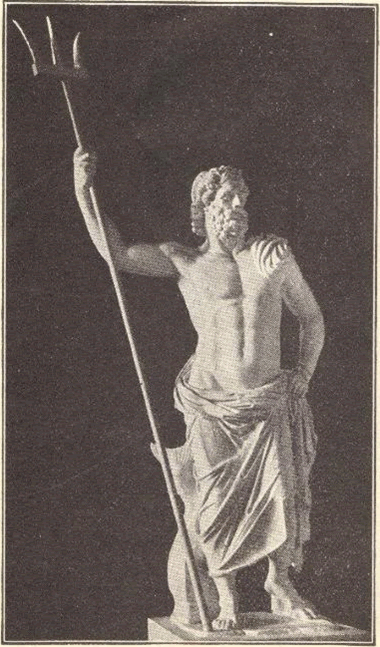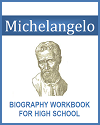| Poseidon or Neptune, God of the Sea |
|---|
| www.studenthandouts.com ↣ World History ↣ Ancient Greece ↣ Images of Ancient Greece |
Poseidon, a.k.a. Neptune: A colossal marble statue found in Melos and now in the National Museum at Athens, Greece. The trident in his right hand is the emblem of the sea god. Neptune is the Roman equivalent of the Greek god Poseidon. Poseidon is a significant figure in Greek mythology, and he is one of the twelve Olympian gods, the principal deities of the Greek pantheon. Click here to enlarge this image.  God of the Sea: Poseidon is primarily known as the god of the sea. He is responsible for all aspects of the oceans, including its currents, tides, and storms. As the ruler of the seas, he is a powerful and often capricious deity who can both provide bountiful harvests to sailors and fishermen and unleash destructive tempests.
God of the Sea: Poseidon is primarily known as the god of the sea. He is responsible for all aspects of the oceans, including its currents, tides, and storms. As the ruler of the seas, he is a powerful and often capricious deity who can both provide bountiful harvests to sailors and fishermen and unleash destructive tempests.
Earthshaker: Poseidon is also associated with earthquakes and is sometimes referred to as "Earthshaker" due to his ability to cause tremors and tsunamis. His trident, a three-pronged spear, is a symbol of his power and connection to the sea. Mythological Stories: Poseidon appears in various myths and legends in Greek mythology. He competed with the goddess Athena for control of Athens, with each offering a gift to the city. Poseidon created a saltwater spring, while Athena provided an olive tree. Athena's gift was deemed more valuable, and she became the city's patron deity. God of Horses: In some traditions, Poseidon is also considered the god of horses. He was often depicted with horses and was believed to have created them from seafoam. Mythological Offspring: Poseidon had a number of mythological offspring. He fathered many sea creatures, including the monstrous Cyclops Polyphemus and the half-horse, half-human beings known as Centaurs. He also had human children, including the hero Theseus and the nymph Thetis, who would later become the mother of Achilles. Worship and Festivals: Poseidon was worshiped by seafarers and coastal communities. He had various temples and shrines throughout Greece, including the Temple of Poseidon at Cape Sounion. Festivals in his honor, such as the Poseidonia, were held in different parts of the Greek world. Associations in Art: In art, Poseidon is often depicted as a mature, bearded figure holding his trident and standing on the waves or riding a chariot drawn by sea creatures. He is recognized by his distinctive attribute, the trident. While Poseidon may not be as widely celebrated as some other Olympian gods, he holds a significant place in Greek mythology as the deity who governed the seas and the natural forces associated with them. |
 |  |  |  |  |  |
| Ancient Greece Books and Films | Ancient Greece Outlines and PowerPoints |
| Ancient Greece Maps and Pictures | Ancient Greece Study Games |
| Ancient Greece Miscellany | Ancient Greece Worksheets |
| www.studenthandouts.com ↣ World History ↣ Ancient Greece ↣ Images of Ancient Greece |








